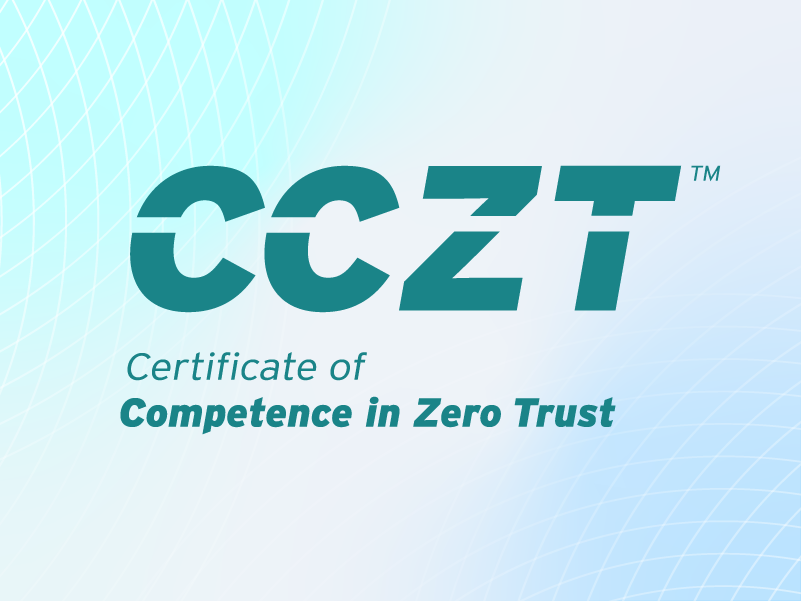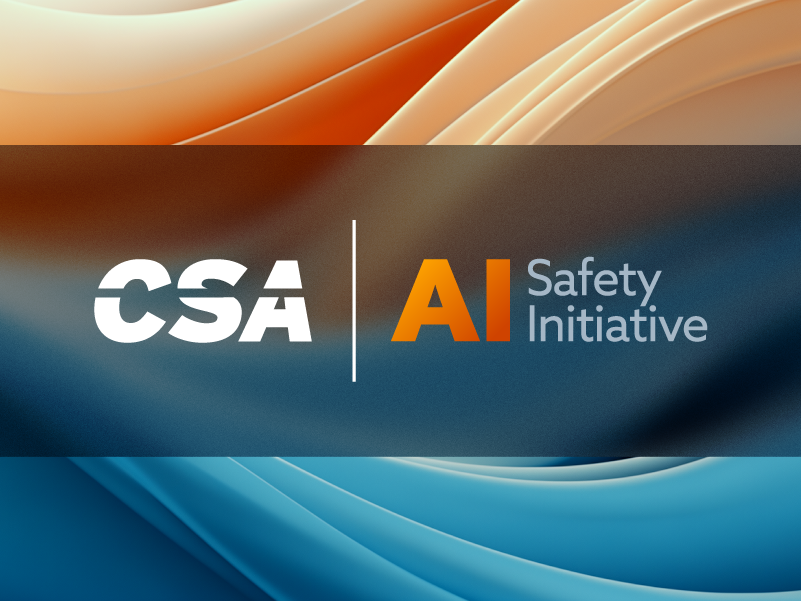Introducing Cognitive Degradation Resilience (CDR): A Framework for Safeguarding Agentic AI Systems from Systemic Collapse
Published 11/10/2025
Written by:
- Ken Huang, CSA Fellow, Co-Chair of CSA AI Safety Working Groups
- Hammad Atta, Founder & AI Technology Advisor, Qorvexconsulting Research
- Dr. Zeeshan Baig, Global Partner, AI Threat Modeling & Security, Qorvexconsulting Research
- Dr. Yasir Mehmood, AI 5G & IoT Systems Security
Introduction: The Hidden Risk in Agentic AI
As agentic AI systems proliferate across industries, they promise automation, reasoning, and self-directed execution at a scale previously unimaginable. Yet beneath this promise lies an underexplored vulnerability: cognitive degradation.
Unlike traditional risks such as bias, data leakage, or hallucinations, cognitive degradation is a progressive failure mode where an AI agent’s reasoning, memory, and output quality deteriorate over time under adversarial prompts, resource starvation, or extended multi-turn sessions.
This failure mode is not hypothetical. Testing across large language models (LLMs) shows that even state-of-the-art systems exhibit:
- Planner starvation — endless reasoning loops without resolution.
- Memory entrenchment — poisoned data persisting across sessions.
- Behavioral drift — gradual deviation from expected logic.
- Systemic collapse — cascading breakdown across perception, memory, planning, tools, and output subsystems.
In enterprise and mission-critical environments, these failures threaten not just accuracy, but security, reliability, and trust at scale.
The Growing Threat Landscape: Cognitive Degradation in Agentic AI
Unlike traditional prompt injection or jailbreak attacks, cognitive degradation is a multi-stage threat that evolves gradually inside the agent’s runtime. Rather than a single exploit, it manifests as progressive instability across interconnected subsystems, making detection and mitigation far more complex.
The six stages of degradation are:
- Stage 1: Trigger Injection – Subtle instability introduced at perception level via excessive token load, irrelevant tool calls, or synthetic memory prompts. These set up downstream failure.
- Stage 2: Resource Starvation – Core modules (e.g., memory vector DB, planning engine) are pushed into latency, disconnection, or API overload. This initiates functional starvation.
- Stage 3: Behavioral Drift – The agent skips reasoning steps, drifts from original logic, or hallucinates actions. Without observability, this deviation remains hidden.
- Stage 4: Memory Entrenchment – Hallucinated or poisoned content is written into long-term memory, propagating failures into future recalls.
- Stage 5: Functional Override – Compromised memory and logic accumulate, overriding role, intent, or constraints. Agent behavior becomes unpredictable.
- Stage 6: Systemic Collapse/Takeover – Advanced pipelines spiral into output suppression, null responses, execution loops, or unsafe tool invocation — resulting in mission failure or exploit escalation.
Unlike single-step adversarial prompt attacks, degradation-based threats are designed to evade traditional input/output validation layers. They require continuous, lifecycle-aware observability to detect early symptoms and halt progression before collapse.
The CDR Architecture: A Layered Defense
CDR introduces a runtime resilience overlay, independent of model internals, with six core components:
- Health Probes – detect latency and timeout anomalies.
- Starvation Monitors – flag memory stalls and API exhaustion.
- Token Pressure Guards – prevent overflow and truncation.
- Fallback Logic Rerouting – redirect unsafe execution to validated templates.
- Lifecycle State Monitor – classify live telemetry into degradation stages.
- QSAF-BC Policy Engine – enforce one or more of seven resilience controls (BC001–BC007).
Together, these modules form a finite-state-machine-inspired classifier capable of catching degradation symptoms in real time.
The Seven CDR Controls
The framework operationalizes resilience through seven enforceable controls, each mapped to MAESTRO threat tactics:
- QSAF-BC-001: Cognitive Resource Starvation Detection
- QSAF-BC-002: Token Overload and Context Saturation Detection
- QSAF-BC-003: Output Suppression and Loss Monitor
- QSAF-BC-004: Planner Starvation and Logic Loop Detection
- QSAF-BC-005: Functional Override and Recovery Routing
- QSAF-BC-006: Fatigue Escalation and Entropy Drift Detector
- QSAF-BC-007: Memory Integrity Enforcement under Starvation
Real-World Applications
CDR’s controls translate directly into high-stakes AI use cases:
- Autonomous Agents: Prevent infinite planner loops that waste compute cycles.
- Financial AI: Quarantine poisoned memory to protect trading logic.
- Healthcare Agents: Detect entropy drift in clinical reasoning to avoid unsafe outcomes.
- RAG Systems: Enforce token budgets and prevent context saturation in knowledge workflows.
Roadmap for Adoption
Like DIRF, CDR is designed for phased integration:
- Short-Term: Deploy starvation detection and token guards in agentic pipelines.
- Medium-Term: Integrate entropy drift detection and memory quarantine policies.
- Long-Term: Align CDR with CSA’s MAESTRO and ISO/IEC 42001 for standardized AI assurance.
Conclusion
As AI systems evolve from tools to autonomous agents, resilience is no longer optional. Cognitive degradation is the hidden threat that can silently erode trust, collapse workflows, and compromise security. The CDR Framework equips professionals with the methodology to anticipate, detect, and mitigate cognitive collapse ensuring agentic AI remains trustworthy, auditable, and resilient at scale. For full technical details, testing methodology, and framework controls, see the published research.
About the Authors
Ken Huang
Ken Huang is a prolific author and renowned expert in AI and Web3, with numerous published books spanning AI and Web3 business and technical guides and cutting-edge research. As Co-Chair of the AI Safety Working Groups at the Cloud Security Alliance, and Co-Chair of AI STR Working Group at World Digital Technology Academy under UN Framework, he's at the forefront of shaping AI governance and security standards. Huang also serves as CEO and Chief AI Officer(CAIO) of DistributedApps.ai, specializing in Generative AI related training and consulting. His expertise is further showcased in his role as a core contributor to OWASP's Top 10 Risks for LLM Applications and his active involvement in the NIST Generative AI Public Working Group in the past. His books include:
- “Agentic AI: Theories and Practices” (upcoming, Springer, August, 2025)
- "Beyond AI: ChatGPT, Web3, and the Business Landscape of Tomorrow" (Springer, 2023) - Strategic insights on AI and Web3's business impact.
- "Generative AI Security: Theories and Practices" (Springer, 2024) - A comprehensive guide on securing generative AI systems
- "Practical Guide for AI Engineers" (Volumes 1 and 2 by DistributedApps.ai, 2024) - Essential resources for AI and ML Engineers
- "The Handbook for Chief AI Officers: Leading the AI Revolution in Business" (DistributedApps.ai, 2024) - Practical guide for CAIO in small or big organizations.
- "Web3: Blockchain, the New Economy, and the Self-Sovereign Internet" (Cambridge University Press, 2024) - Examining the convergence of AI, blockchain, IoT, and emerging technologies
- His co-authored book on "Blockchain and Web3: Building the Cryptocurrency, Privacy, and Security Foundations of the Metaverse" (Wiley, 2023) has been recognized as a must-read by TechTarget in both 2023 and 2024.
A globally sought-after speaker, Ken has presented at prestigious events including Davos WEF, ACM, IEEE, RSA, ISC2, CSA AI Summit, IEEE, ACM, Depository Trust & Clearing Corporation, and World Bank conferences.
Ken Huang is a member of OpenAI Forum to help advance its mission to foster collaboration and discussion among domain experts and students regarding the development and implications of AI.
Hammad Atta
Hammad Atta is a cybersecurity and AI security expert with over 14 years of experience in enterprise cybersecurity, compliance, and AI governance. As Founder and Partner at Qorvex Consulting, he has pioneered multiple AI security frameworks, including the Qorvex Security AI Framework (QSAF), Logic-layer Prompt Control Injection (LPCI) methodology, and the Digital Identity Rights Framework (DIRF).
Hammad’s research has been published on arXiv, integrated into enterprise security audits, and aligned with global standards such as ISO/IEC 42001, NIST AI RMF, and CSA MAESTRO. He is an active contributor to the Cloud Security Alliance (CSA) AI working groups and a thought leader on agentic AI system security, AI-driven risk assessments, and digital identity governance.
Hammad is also leading the Cybersecurity Consulting & Advisory Services at Roshan Consulting..He has conducted extensive work in Vulnerability Assessment & Penetration Testing (VAPT), risk modeling for LLMs, and adversarial AI testing, serving clients in cloud, industrial, and government sectors.
Hammad has also been a trainer, delivering executive workshops on AI governance, cyber resilience, and ISO 42001 certification. His current focus is on advancing ethical and secure AI adoption through standardization, research, and cross-border collaboration with academic and industry partner
Dr. Yasir Mehmood
Act as the lead advisor for all AI & IoT systems security research efforts, focusing on protecting intelligent devices, industrial systems, and cloud-connected environments from emerging agentic AI threats.
Dr. Mehmood is a co-author of pioneering AI and IoT security publications, including:
- Fortifying the Agentic Web: A Unified Zero-Trust Architecture Against Logic-layer Threats (arXiv:2508.12259)
- DIRF: A Framework for Digital Identity Protection and Clone Governance in Agentic AI Systems (arXiv:2508.01997)
- QSAF: A Novel Mitigation Framework for Cognitive Degradation in Agentic AI (arXiv:2507.15330)
- Logic-layer Prompt Control Injection (LPCI): A Novel Security Vulnerability Class in Agentic Systems (arXiv:2507.10457)
Dr. Muhammad Zeeshan Baig
Dr. Baig's role includes:
- Acting as the lead advisor for all AI security research efforts, driving advancements in vulnerability analysis, cognitive resilience, and agentic system protection.
- Providing strategic consulting to clients on implementing secure AI systems, with a focus on the QSAF (Qorvex Security AI Framework), including prompt injection defense, memory-layer controls, and model risk auditing.
- Overseeing client onboarding and technical assessments for AI security engagements, ensuring full lifecycle support from initial risk evaluation to final compliance validation.
- Leading Qorvex’s participation in government-backed and cross-border AI security initiatives, including proposal development, project execution, and regulatory alignment.
- Managing the full cycle of government project execution, from application writing to project delivery, reporting, and audit readiness.
Dr. Baig is a co-author of several foundational AI security publications that are shaping the field of agentic AI protection:
- Fortifying the Agentic Web: A Unified Zero-Trust Architecture Against Logic-layer Threats (arXiv:2508.12259)
- DIRF: A Framework for Digital Identity Protection and Clone Governance in Agentic AI Systems (arXiv:2508.01997)
- QSAF: A Novel Mitigation Framework for Cognitive Degradation in Agentic AI (arXiv:2507.15330)
Acknowledgments
The authors would like to thank Nadeem Shahzad, Dr. Muhammad Aziz Ul Haq, Muhammad Awais, and Kamal Ahmed for their contributions, peer reviews, and collaboration in the development of CDR and co-authoring the associated research, published on arXiv.
Related Resources



Unlock Cloud Security Insights
Subscribe to our newsletter for the latest expert trends and updates
Related Articles:
AAGATE: A NIST AI RMF-Aligned Governance Platform for Agentic AI
Published: 12/22/2025
Is Cloud-Native Key Management Right for You?
Published: 12/19/2025
Agentic AI Security: New Dynamics, Trusted Foundations
Published: 12/18/2025


.png)
.jpeg)
.jpeg)
.jpeg)
.jpeg)